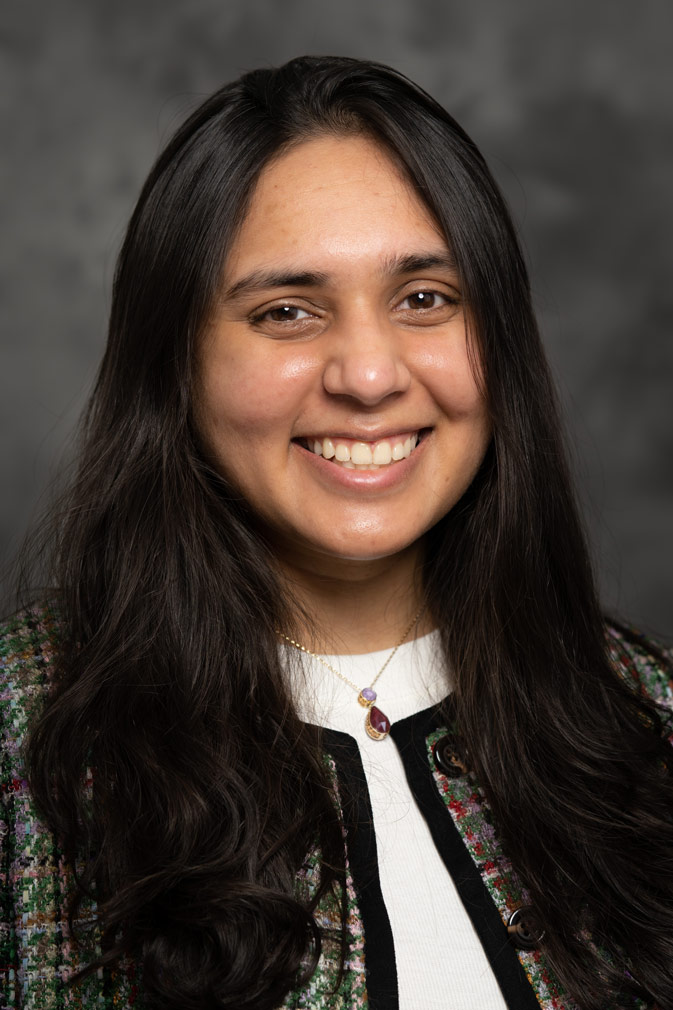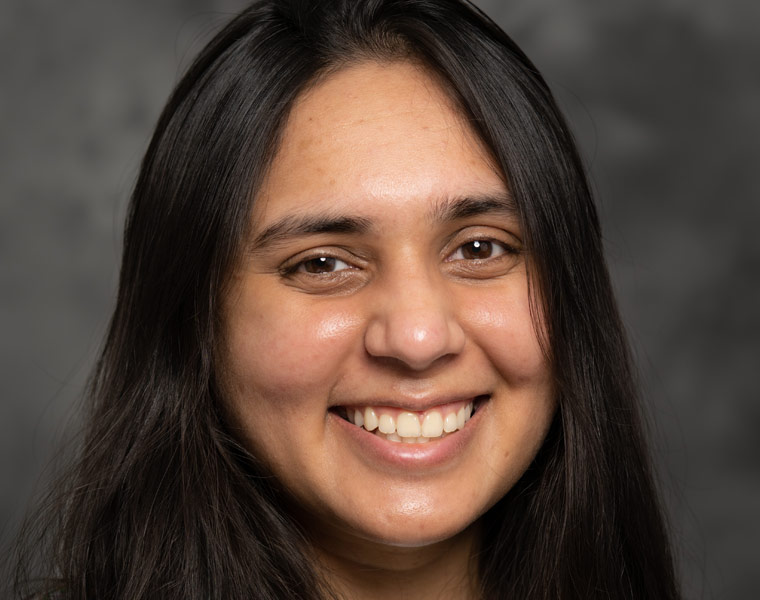
Palak Gupta doesn’t hold the answer to curing Parkinson’s disease. She readily admits she likely won’t be able to eradicate the disorder that targets the central nervous system, causing tremors and uncontrollable movements in approximately 10 million people around the world. But she does intend to make life more enjoyable for those experiencing the condition. And she’s gotten an early jump on it, with her name attached to more than 10 peer-reviewed articles at just 28 years old.
Now, Gupta’s early accomplishments are getting attention, even beyond biomedical engineering circles: Crain’s Cleveland Business recently named her among its “20 in Their Twenties” honorees, a listing of young professionals who have had an outsized impact on their fields. Also on the list were six CWRU alumni from various disciplines: 27-year-old Lysette Roman (LAW ‘20), associate at Littler Mendelson; 26-year-old Matthew Polefko (MGT ‘20), program manager in regional hospital administration at Cleveland Clinic; Claire Levin (SAS ‘20), senior executive specialist at Youth Opportunities Unlimited; 29-year-old Su Latt (MGT ‘18), analytics manager at Merkle; 26-year-old Matthew Polefko (MPOD ’20), program manager in regional hospital administration at Cleveland Clinic; and 28-year-old Hannah Caldwell (LAW ‘19), associate at Thompson Hine.
Gupta, a PhD candidate in the Department of Biomedical Engineering at Case Western Reserve University, bases her research at the Louis Stokes Cleveland VA Medical Center, working with her research advisor Aasef Shaikh, associate professor of neurology.
Her research primarily focuses on visual impairments, a lesser-known symptom of Parkinson’s disease, and drives twofold goals: first, to better understand the physiology of why Parkinson’s impairs vision, and second, to use existing therapies to alleviate these symptoms. Deep brain stimulation is one of the key methods Gupta employs, with the hope of helping physicians use it on a personalized basis for patients.
Get to know Gupta better, including her research topics, in this Q&A.
Answers have been lightly edited for clarity and length.
Why study Parkinson’s disease?
I have always been fascinated by the human brain. Right from high school, it was my favorite topic to read about. So it was only natural for me to seek neural engineering topics and research groups for graduate school. Secondly, Parkinson’s typically affects people over the age of 65. [Patients are] your grandparents’ age… they’re definitely somebody’s grandparents. I feel a sense of contentment to be able to help them in whatever little way I can through my research either now, or in the future.
What topics or questions does your research address?
Parkinson’s disease (PD) is known to be a “movement disorder,” so the emphasis has been on addressing motor symptoms. In the past few years, we have come to realize there are non-motor symptoms [of PD] that are less well-known but are equally important. One aspect of non-motor symptoms are vision impairments due to Parkinson’s. These occur in over one-third of PD patients. My research aims are two-fold:
- To understand the physiological basis of these impairments; and
- To understand how existing therapies like deep brain stimulation (DBS) produce changes in the neural circuit behavior that then influence these impairments.
The big picture goal is to be able to use the outcome of my research to enable physicians to design more effective and personalized DBS therapies to help these people.
What methods do you employ in your research?
I primarily use a technique called video-oculography. I use sophisticated infra-red cameras to capture the micro and macro-movements that eyes make when presented with a visual stimulus. I compare this eye movement data from different individuals (with PD and without) under specific study design conditions and try to understand where the basis of the deficit lies. We look at patients’ brain scans to understand what is the region within the brain being influenced by DBS therapy for PD patients and correlate that with our understanding of neural circuits that control the eye movements.
What have you enjoyed most about your work?
I love the fact that we are in an age where I can write a piece of code or a mathematical model to describe the human brain behavior. There is still so much to learn from this perfectly designed and intricate model, so my work is barely scratching the surface. That being said, it is so exciting to be able to work on some of the most advanced technologies in the world right now with the brightest minds. I enjoy working with the patients as they are always so eager and happy to be a part of our research.
What has your experience working directly with patients been like?
The patient population I work with are all over the age of 65, and 95% of them are U.S. military veterans. Two words encapsulate my experience: inspiring and fulfilling. These patients have had such intense experiences and have to deal with Parkinson’s symptoms and, yet, they are always cheerful and happy to contribute their time to my research. It is such a pleasure and a great learning experience.
Have you had any moments with patients that stand out most?
I’ve had multiple memorable moments with our participants. My favorite is the one where a gentleman was so excited about one of our experiments with VR-based visual navigation because he thought it was like a video game. He asked us to call him back so he could do it again! I also love the times when they ask me questions about our study and our hypothesis and actually try to understand it. We try to explain the scientific rationale and also share our published work with them.
What does it mean to you to receive this early-career honor?
It means everything! As PhD students, each one of us works so hard and spends years in pursuit of making a single change or adding to existing knowledge out there. Getting this recognition means a lot to me because it provides a thrust and a sense of recognition. When we’re in the lab, many experiments work and we see the results we hoped, but so many more don’t. I will keep this award as a motivation and remind myself to not get discouraged by momentary setbacks and to strive harder. This award only encourages me to dream bigger and work harder. I won’t “cure” Parkinson’s disease through my research, surely, but if I can help a few people live better, and more comfortable lives, then that’s something I will make happen.
Where do you hope to take your career and research from here?
I hope to graduate sometime next year. Following that, I hope to continue contributing to healthcare and neural engineering. I love my current work with computational approaches and the interactions I get to have with our Parkinson’s participants, so I hope to be able to have this happy medium in my future career as well.

